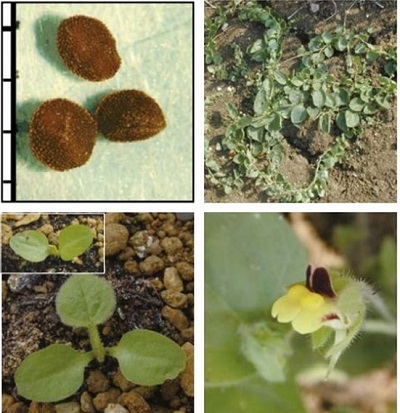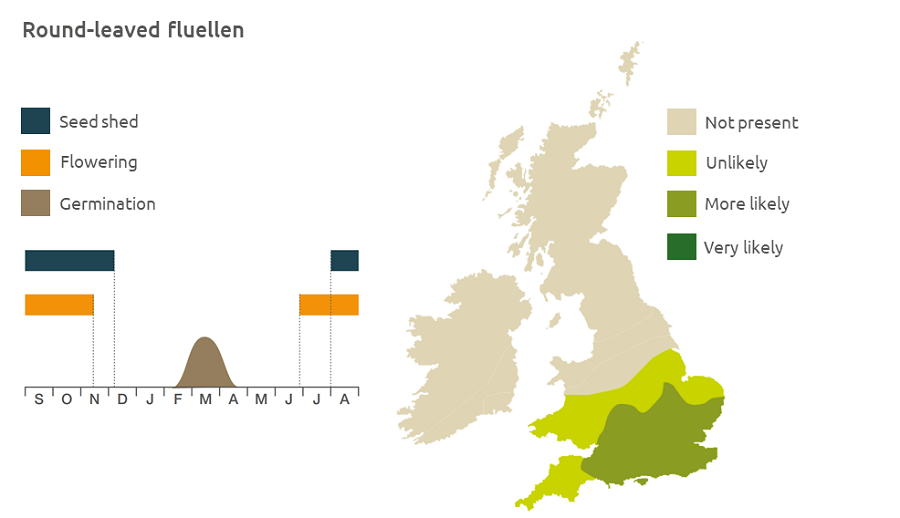- Home
- Knowledge library
- Distribution and biology of round-leaved fluellen in the UK
Distribution and biology of round-leaved fluellen in the UK
Round-leaved fluellen is a poorly competitive broad-leaved weed with value to biodiversity. Find out how to identify and control it.
Overview
Round-leaved fluellen (Kickxia spuria) needs warmer conditions than sharp-leaved fluellen so it is more common in southern Britain. It is a poorly competitive species found in uncompetitive crops, particularly perennial and row crops. Seeds germinate in spring and set seed usually after harvest. Plants often grow lower than the combine cut, so can set seeds in late-ploughed fields.
- It has value to biodiversity
Description
It is a sprawling dicotyledon, growing to 20–40 cm, with glandular hairs.
Key features
Young plant: The first true leaves are rounder than those of sharp-leaved fluellen.
Plant: The leaves are almost circular.
Flowers: The flowers resemble those of snapdragon and are bright yellow with a brown upper lip.
Lookalikes
Round-leaved fluellen is difficult to distinguish from sharp-leaved fluellen: the cotyledons are smaller and rounder while the first true leaves are also rounder.

Location and life cycle

Geographic distribution
Round-leaved fluellen is a lowland species which often grows with the sharp-leaved species in cornfields and other arable fields and gardens.
Soil type
It likes weakly acid to weakly alkaline soils low in nutrients, including light soils over boulder clay. It prefers light conditions.
Seed statistics
- Seed longevity: >5 years
- Seed weight: 0.39 mg
- Seeds/flower: 25
- Seeds/plant: 2,000
Management
It is readily controlled by cultivation and seldom found in competitive winter crops or grass ley rotations.
For advice on herbicides, please speak with your agronomist or adviser.
When was this information last updated?
This page is based on content from the encyclopaedia of arable weeds publication. Since it was first released in 2008, the publication has been redesigned several times but not revised. However, it remains a good foundation for general information on the distribution and biology of weeds.

